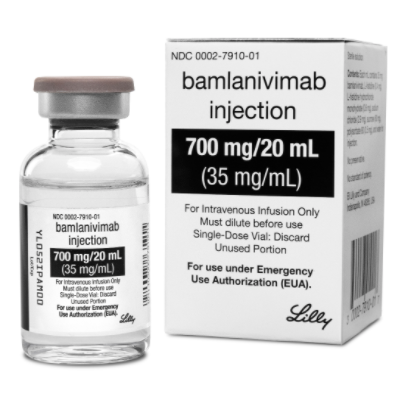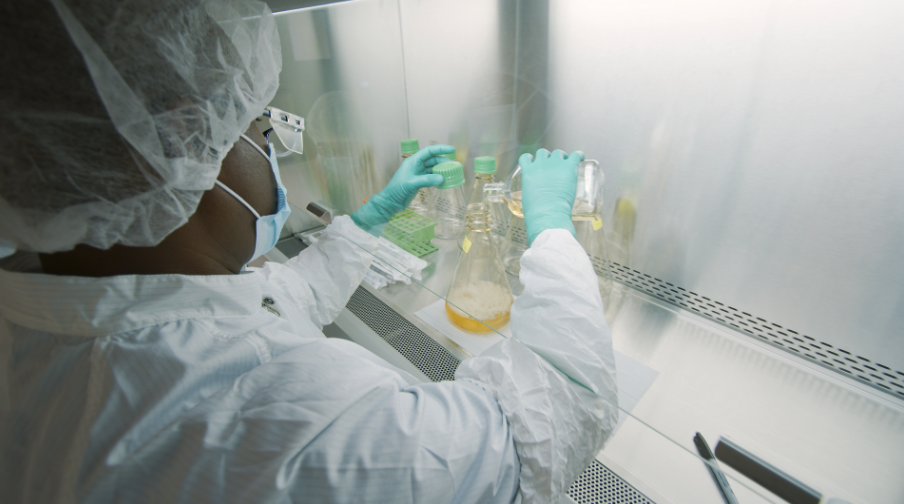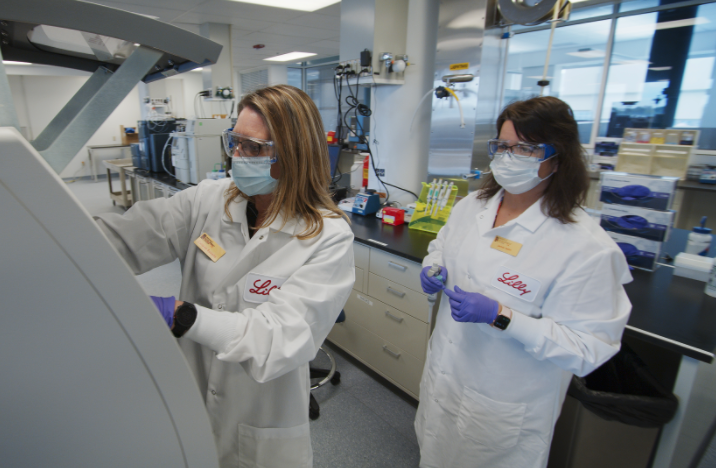Eli Lilly Releases COVID-19 Antibody Treatment
Photography Provided by Eli Lilly
 After a year that feels like it’s been full of upsets and letdowns, news that Eli Lilly and Company has produced a COVID-19 antibody treatment, for which the U.S. Food and Drug Administration (FDA) has granted emergency authorization, is a reason to celebrate. The treatment stems from one of the first coronavirus survivors from the Pacific Northwest.
After a year that feels like it’s been full of upsets and letdowns, news that Eli Lilly and Company has produced a COVID-19 antibody treatment, for which the U.S. Food and Drug Administration (FDA) has granted emergency authorization, is a reason to celebrate. The treatment stems from one of the first coronavirus survivors from the Pacific Northwest.
“When your body has a virus that enters it, your immune system recognizes it and creates antibodies that help your body to rid itself of the virus,” says Janelle Sabo, Eli Lilly’s COVID-19 therapeutics platform leader. “We were able to isolate one of those antibodies and scale it up.”
When introduced to the human body, this antibody binds to the COVID-19 virus and helps neutralize it, so that it clears from the body. Once Eli Lilly was granted approval by the FDA, the U.S. government bought a supply that was shipped to Eli Lilly’s wholesaler. Every week, the U.S. government and state health departments across the country decide where the therapy should be shipped. Currently the therapy, called bamlanivimab, is at various locations across the U.S., including right here in Indianapolis.
“We know bamlanivimab is in several hospitals in Indiana, and patients have already been dosed with it,” Sabo says.
What this treatment means for high-risk patients is significant. High-risk patients include those who are older, overweight, or have conditions that predispose them to suffer acutely after contracting COVID-19. The antibody is administered as soon as possible following a positive coronavirus test – within 10 days of developing symptoms.
“Our hope is that when this therapy is administered early on, those patients will avoid hospitalization and hopefully will be able to ease their symptomology sooner as well,” Sabo says.
 If an individual is exhibiting COVID-19 symptoms, they should get tested. If they are positive and have symptoms, they may be a candidate for this drug if they are 55 or over, have a body mass index over 35, or have conditions like cardiovascular disease or an impaired immune system. It’s important to note that once patients are ill enough to be hospitalized, bamlanivimab is not the right treatment for them.
If an individual is exhibiting COVID-19 symptoms, they should get tested. If they are positive and have symptoms, they may be a candidate for this drug if they are 55 or over, have a body mass index over 35, or have conditions like cardiovascular disease or an impaired immune system. It’s important to note that once patients are ill enough to be hospitalized, bamlanivimab is not the right treatment for them.
“This is because at that point there are other biological things that are going on that may require a different set of treatments,” Sabo says. “This antibody treatment is targeted for that early-diagnosis, symptomatic, not-ready-to-go-to-the-hospital population.”
Sabo says the virus has caused a strain on many hospital systems.
“We are seeing fewer and fewer ICU beds,” Sabo says. “We are also seeing busier and busier ERs. This is true here in Indiana and across the country.”
When this treatment is administered in the right time period, it has the ability to help reduce that strain in hospitals and emergency rooms.
“The data would suggest this antibody treatment could reduce [the virus] as much as 70 to 80% in this population,” Sabo says. “This is an opportunity not only to help patients feel better faster, but also to help the health care system to reduce some of the pressure of the hospitalizations and additional ER visits.”
Sabo’s biggest piece of advice to the community is to wear masks to reduce the spread.
“I know that there is mask fatigue, but until vaccines become widely available and there are additional treatments, we really need to wear them,” Sabo says. “Mask wearing is as much about you as it is about your neighbor, your best friend, your grandmother and your mother. It’s about protecting those with immune systems that are weakened, or have conditions that make it harder to fight these types of infection.”
 Sabo notes that “infection” is an interesting term, since many people who test positive for the virus never develop symptoms.
Sabo notes that “infection” is an interesting term, since many people who test positive for the virus never develop symptoms.
“This new antibody treatment is not for them,” she explains. “This is about looking at patients who not only have the virus but now have started to develop symptoms. I think that’s an important distinction because there are a lot of people who have a positive test and no symptoms, and frankly those patients will likely go on to do just fine with very little treatment or intervention.”
With vaccines developed that are reportedly 90 to 95% effective, Sabo believes significant progress can be made in fighting the pandemic in 2021.
“It’s important we recognize that there is much that we still don’t know [about the virus], so we shouldn’t be overly confident that just because we are [in a certain demographic] that we are always going to be okay,” Sabo adds. “Always is a big statement.”





